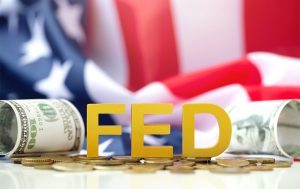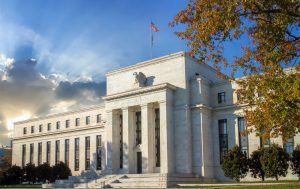The U.S. dollar climbed to a more than six-week peak against the yen on Thursday, driven by signs of a strong U.S. labor market and expectations that the Federal Reserve will remain cautious in reducing interest rates. As markets absorb economic data, geopolitical tensions, and central bank policies, here’s a breakdown of the key factors influencing today’s forex landscape.
- Strong U.S. Job Data and Its Impact
The ADP’s private payrolls report for September revealed a better-than-expected gain of 143,000 jobs, raising hopes for a solid non-farm payrolls report due Friday. This could be pivotal in determining how aggressively the Fed eases interest rates going forward. A strong jobs report could diminish the need for rapid rate cuts, as it would suggest that the U.S. economy is weathering higher borrowing costs well.
Currently, traders are pricing in a 35.9% chance of another 50 basis point rate cut at the Fed’s November 7 meeting, down from 57.4% a week ago. With positive labor data, expectations for an outsized rate cut are dwindling, though they remain on the table.
- Yen Under Pressure as New Japan PM and BoJ Stay Dovish
The yen was under strong selling pressure, falling to 146.80 per dollar, after Japan’s new Prime Minister Shigeru Ishiba signaled that it is too early for additional rate hikes. Following his meeting with Bank of Japan (BoJ) Governor Kazuo Ueda, Ishiba stated that the country is not in an environment that necessitates tighter monetary policy. This dovish stance, combined with an upcoming snap election on October 27, has further weakened the yen.
Ishiba’s softened tone on corporate and capital gains taxes, after previously supporting such measures, adds another layer of uncertainty to Japan’s fiscal outlook, but also appears aimed at boosting stock markets ahead of the general election. In this context, the consensus remains in favor of USD/JPY longs, with expectations that the yen will continue to weaken in the short term.
- Euro and ECB’s Dovish Turn
The euro remains under pressure, trading near a three-week low against the dollar at $1.10345. European Central Bank (ECB) policymaker Isabel Schnabel, traditionally hawkish, adopted a dovish tone by acknowledging that eurozone inflation is increasingly likely to retreat to the bank’s 2% target. Traders now lay 95% odds of a 25 basis point rate cut at the ECB’s next meeting on October 17, with even a small possibility of a 50 basis point cut. - Geopolitical Tensions in the Middle East
The U.S. dollar’s safe-haven appeal was further bolstered by escalating tensions in the Middle East. Following Iran’s ballistic missile attack on Israel, which triggered a vow of retaliation, markets are grappling with the possibility of a larger conflict. While markets tend to focus on economic fundamentals, these geopolitical risks are difficult to price and could cause abrupt movements if the situation worsens. - Other Currencies and Market Movements
- GBP/USD: Sterling weakened 0.13% to $1.32485, still reeling from the Bank of England’s cautious tone on further rate hikes.
- AUD/USD: The Australian dollar slid 0.33% to $0.68635 as risk-sensitive currencies felt the pressure of geopolitical concerns in the Middle East.
- Swiss Franc: The Swiss franc continued to firm after the Swiss National Bank cut interest rates by 25 basis points, adding to expectations of further dovish policies. What to Watch Next
The upcoming U.S. non-farm payrolls report on Friday will be critical. A strong report could reinforce the narrative that the U.S. economy is resilient enough to withstand higher rates, reducing the likelihood of rapid rate cuts. Conversely, a weak report could fuel expectations for more aggressive easing, putting downward pressure on the dollar.
Additionally, the snap election in Japan and the BOJ’s next policy meeting on October 31 will be key for yen traders. Prime Minister Ishiba’s comments on monetary policy and taxes will continue to shape sentiment around the yen in the lead-up to these events.
Geopolitical risks in the Middle East remain a wildcard, with potential market volatility if tensions escalate. For now, markets are attempting to balance these risks with the solid economic fundamentals that continue to support the dollar’s strength.
Conclusion
With strong U.S. job data and geopolitical uncertainty boosting demand for the dollar, the greenback has surged to multi-week highs. While the Fed’s path forward remains data-dependent, the yen is under pressure from dovish signals at home, and the euro is weakened by expectations of ECB rate cuts. As always, traders should remain vigilant in this volatile landscape, with key economic data and political events on the horizon.



